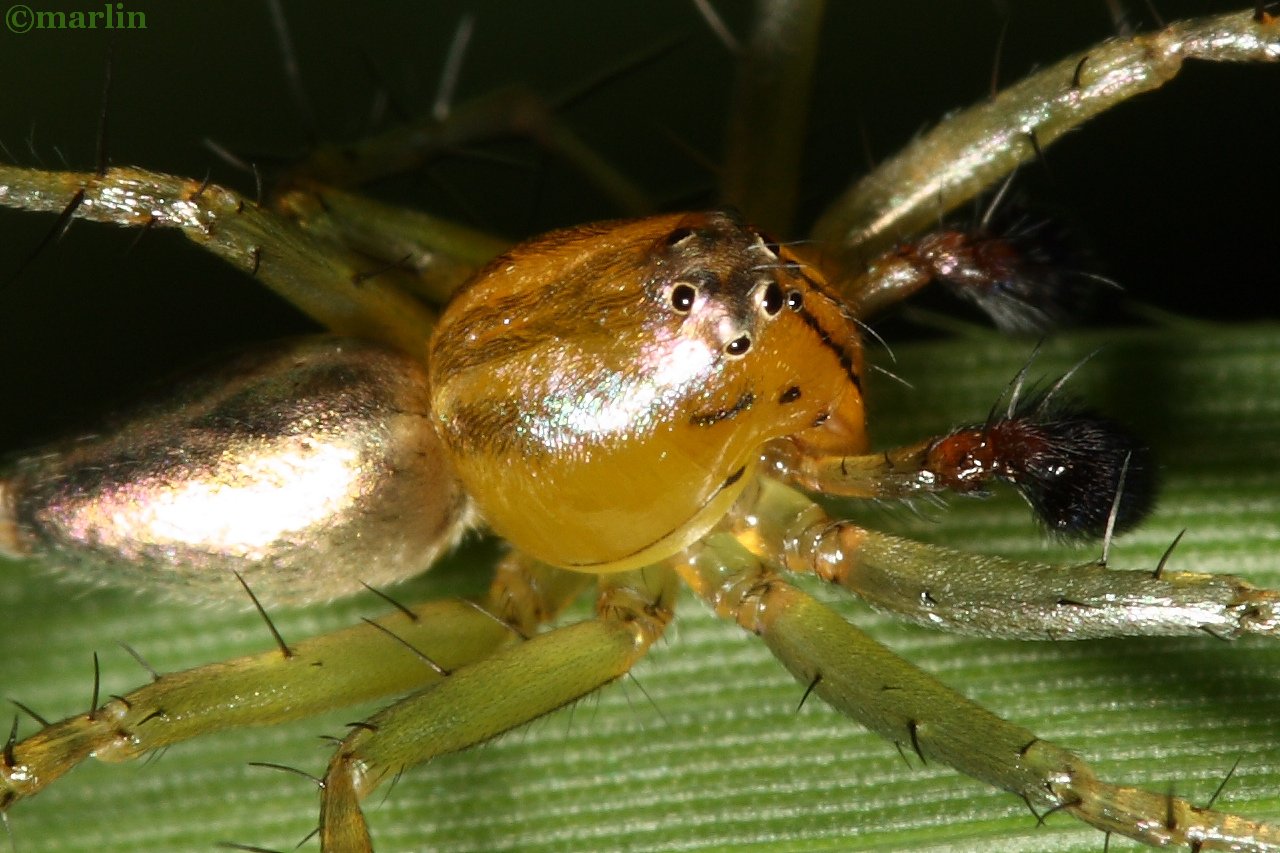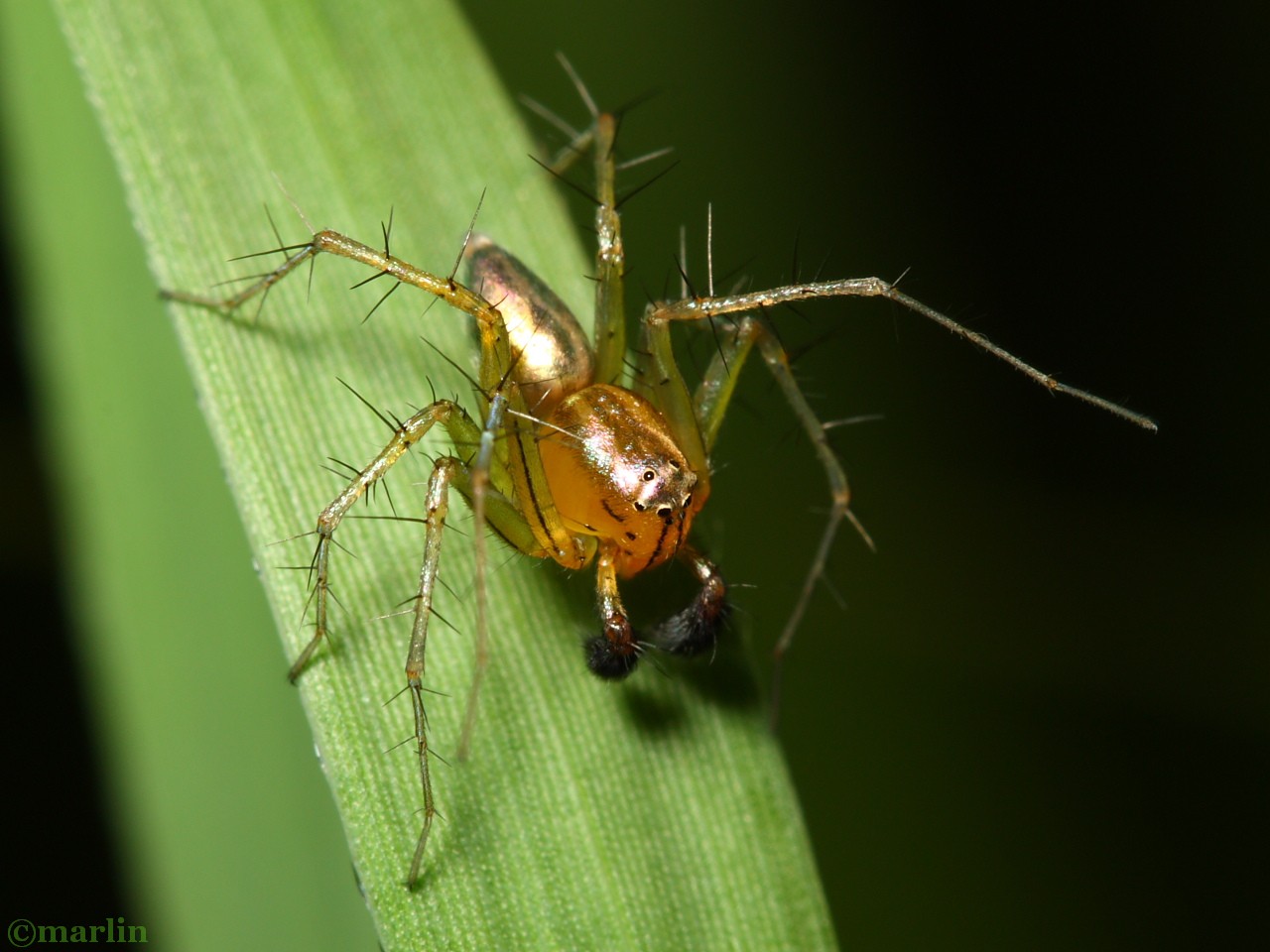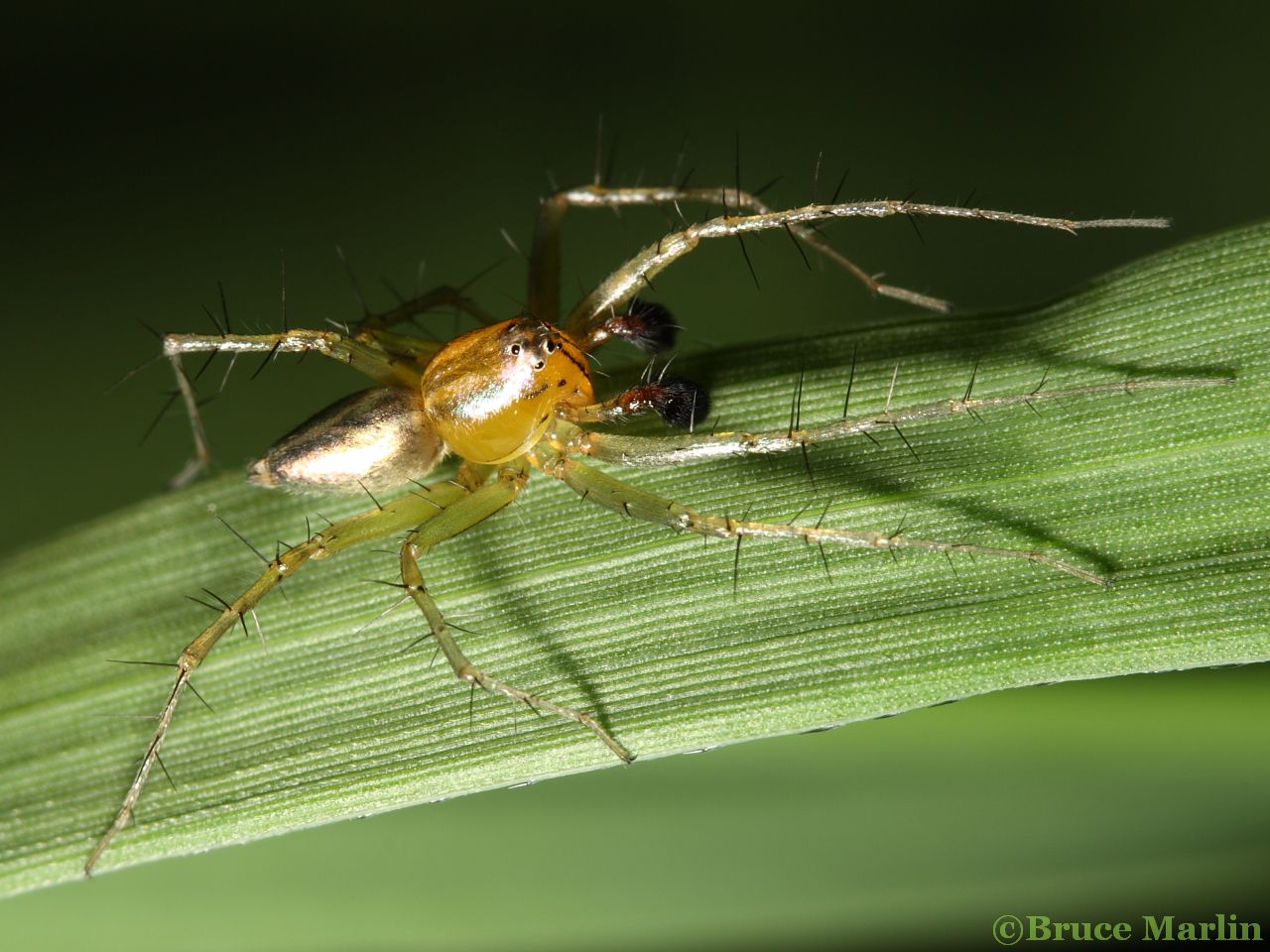Striped Lynx Spider – Oxyopes salticus
Lynx spiders pose little danger for humans. Although there have been a few cases of human envenomation, the bites do not cause much more than temporary pain and swelling at the site, and no tissue damage or aftereffects.
 Lynx spiders, like all others in the family Oxyopidae, are diurnal, that is, they hunt during daylight hours.
Lynx spiders, like all others in the family Oxyopidae, are diurnal, that is, they hunt during daylight hours.
Their hunts are conducted much like those of the jumping spiders (Salticidae); they roam low foliage, leaping about looking for prey items.
They trail a dragline when leaping, but never construct webs for prey capture.
Their eyesight is not as keen as the jumping spiders, and they more often use the “wait and pounce” hunting tactic most often associated with the (equally well) camouflaged crab spiders.  Lynx spiders are among the major predators of insects low shrubs and grasses.
Lynx spiders are among the major predators of insects low shrubs and grasses.
Many species of Diptera, including syrphid and tachinid flies are also prey for lynx spiders.
Reference: Bugguide.net, Oxyopes salticus


